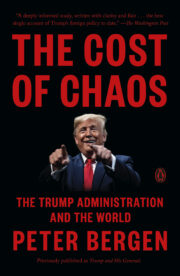Articles
This is TALK OF THE NATION. I’m Neal Conan in Washington.
On Saturday the people of Afghanistan voted in that country’s first-ever presidential election. UN officials report a higher than expected turnout as Afghans waited on long lines. Some stood for hours in rain and snow. The country’s previous rulers, the Taliban, proved unable to disrupt the vote. Official results aren’t expected for weeks. The counting is not yet under way because many ballots from remote areas have yet to arrive at designated counting centers on donkey back.
Al Qaeda and the Terrorist Attacks in Egypt.
The multiple bomb attacks on Thursday at resorts on Egypt’s Red Sea coast, which killed dozens and wounded more than a hundred fifty, the majority of whom were Israelis on vacation during the Jewish holidays, bear the unmistakable hallmarks of al Qaeda. While Palestinian terrorist groups such as Hezbollah and Hamas have historically not operated in Egypt, the Egyptian Jihad group, which merged its operations with al Qaeda in the late ’90s, has carried out numerous terrorist operations in Egypt over the past two decades. And so, Egyptian members of al Qaeda must be considered the leading suspects in the attacks.
KABUL, Afghanistan (CNN) — There is no reason to nullify results from Saturday’s presidential election in Afghanistan, despite voting irregularities that caused the opposition candidates to demand a new election, according to the head of an international group monitoring the process. Millions of Afghan voters — including veiled women — braved threats of Taliban violence […]
From Peter Bergen, Gardez, Afghanistan.Visits to polling stations in Paktia province in eastern Afghanistan and Loghar province, south of Kabul, indicate that the problems with the ink used to mark voters’ fingers in Saturday’s Afghan presidential election extend beyond the capital. At the Kolangar polling center in Loghar election supervisor, Said Narullah, said “this ink […]
As has often been observed, the leadership of al-Qaeda is highly secretive, running the organization in a compartmentalized manner, which makes it hard to penetrate?and also ensures that any operative who may be captured will know only a portion of the group’s secrets. An illustration of this is the limited number of al-Qaeda leaders who […]
Where has he been? How did we ever let him get away? Our correspondent?one of the few Western journalists ever to have met Osama bin Laden?traces the al-Qaeda leader’s footsteps in Afghanistan and Pakistan, and describes the sometimes hapless American pursuit
When you fly over the icy peaks of the Hindu Kush, which march in serried ranks toward the Himalayas, dividing Central Asia from the Indian subcontinent, you get a sense of the scale of the problem: Osama bin Laden may be hiding somewhere out there. Wherever he is, bin Laden continues to give substantial ideological direction to jihadist movements around the globe?and so American forces are scouring the Hindu Kush to find him.
Based on what Americans have been seeing in the news media about Afghanistan lately, there may not be many who believed President Bush on Tuesday when he told the United Nations that the ”Afghan people are on the path to democracy and freedom.” But then again, not many Americans know what Afghanistan was like before the American-led invasion. Let me offer some perspective.
Peter Bergen is a print and television journalist and author of Holy War, Inc.: Inside the Secret World of Osama bin Laden. Mr. Bergen is CNN’s terrorism analyst and an Adjunct Professor at the School of Advanced International Studies at Johns Hopkins University. His article, entitled “The Long Hunt for Osama”, appears in this month’s issue of The Atlantic Monthly. He recently returned from a six week trip to Pakistan and Afghanistan. The interview was conducted by Chris Heffelfinger on September 12, 2004 in Washington, DC.
We all know how the tragic story of Hamburg Cell will end, but the question that Channel 4’s new film tries to answer is: how did the 9/11 plot first take shape? Hamburg Cell focuses on a group of young Middle Easterners who arrived in Germany during the 1990s, and their unlikely transformation from nondescript students to key players in the 9/11 conspiracy. As the final report of the 9/11 commission pointed out last month, Osama bin Laden initially conceived of using more established members of al-Qaida to execute the attacks on Washington and New York, but decided instead to use the “Hamburg group [who] added the enormous advantages of fluency in English and familiarity with life in the west” – attributes that were necessary to learn how to fly at technically demanding American flight schools, and for the meticulous planning of the 9/11 operation.
This is TALK OF THE NATION. I’m Neal Conan in Washington.
As Afghanistan prepares for its first presidential election, the country continues to suffer from violence and terrorism, from poverty and from political and ethnic divisions. After 25 years of almost constant war, much of Afghanistan’s infrastructure lies in ruins and the central government’s authority sometimes seems limited to the capital, Kabul. Yet, across the country, millions have turned out to register to vote in the looming election. Twenty candidates have emerged to challenge the apparent favorite, interim President Hamid Karzai who took office in 2002 with strong American support. Often overshadowed by events in Iraqf, Afghanistan is at a crucial crossroads. A successful election this October could help legitimize and stabilize the government. The consequences of failure are ominous.
FEATURED BOOK

 Previous
Previous
